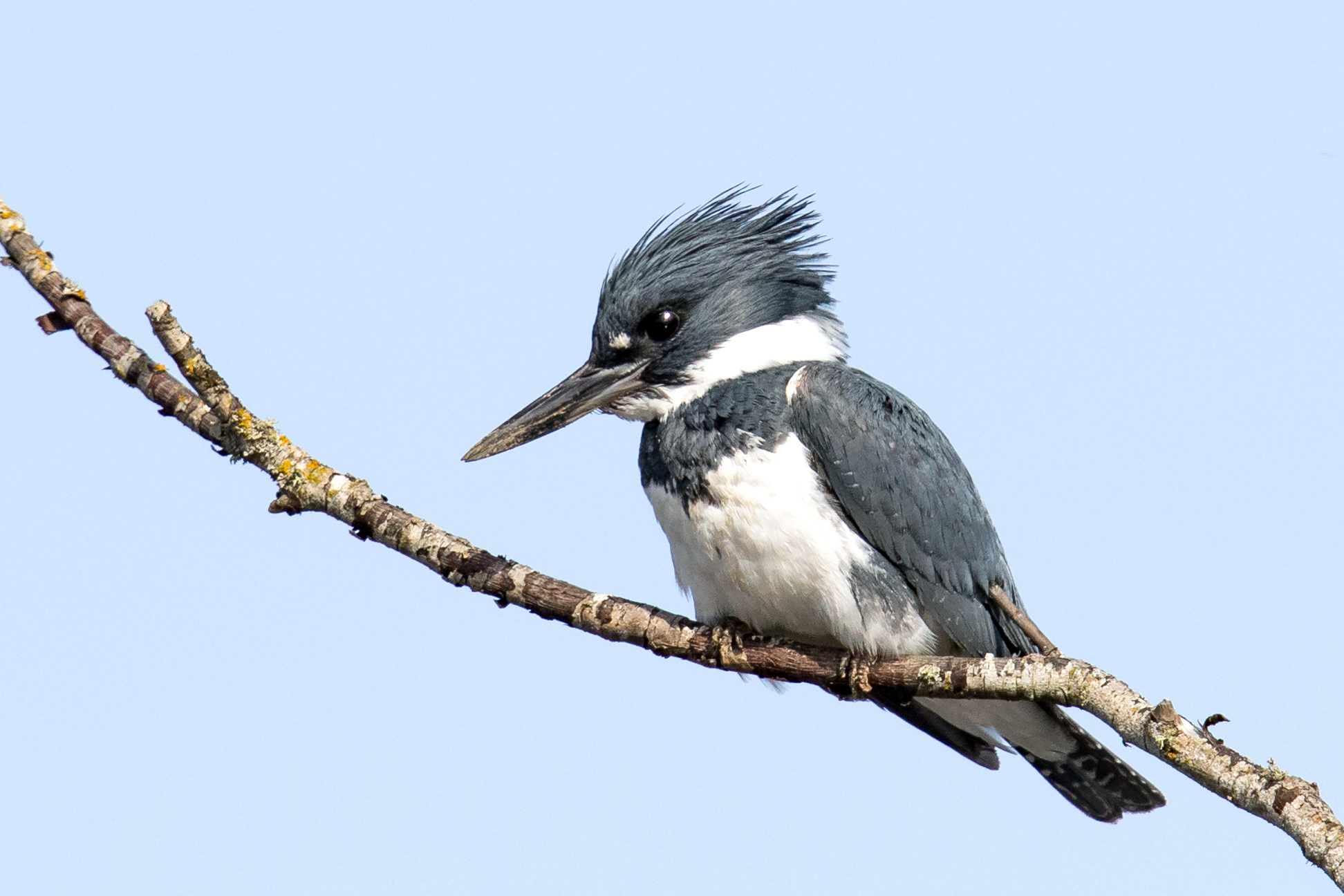Bird of the Month: Belted Kingfisher
By Hugh Jennings
PC: Mick Thompson (Belted Kingfisher)
Scientific Name: Ceryle alcyon
Length 13 in
Wingspan 20 in
AOU Band code BEKI
The Belted Kingfisher (BEKI) is 13” long with a wingspan of 20”. The genus name Ceryle (ah-SER-ih-lee) is from the Greek kerylos, a halcyon, or in Latin halcyon, a kingfisher. The species name acycon (AL-sih-on) is for Alcyone, or Halcyone, of Greek mythology, daughter of Aeolus, god of the winds, who, with her husband, Ceyx, was transformed into a kingfisher. It is the only kingfisher found north of Texas or Arizona.
Like other kingfishers it is very large-headed with a long, heavy bill, short tail and very short legs. The head, back and wings are blue-gray and it has a white collar. Both sexes have a slate blue breast band. The female has a rust belly band and flanks. Juvenile resembles adult but has rust spotting in breast band.
The BEKI is common along rivers and brooks, ponds and lakes, and estuaries. The bird is often first noticed by its wild rattling call while in flight. It is usually found perched on a high snag or hovering on rapidly beating wings, then plunging head first into the water to grab a fish. After seizing a fish, it rises and returns to its perch, where it beats the fish on a limb, then tosses it into the air and swallows it headfirst. It also eats amphibians, reptiles and insects. Bones, scales and other indigestible parts of prey are coughed up later as pellets. During courtship the male brings a fish and feeds it to the female.
The nest is in a steep or vertical dirt bank, usually with a high content of sand. Both sexes take part in digging a long horizontal tunnel with a nest chamber at the end. The tunnel is about 3-4” in diameter, unlined, usually 3-7 ft. long. It may take from 3 days to 3 weeks to dig depending on the type of soil. The excavation is done with the bill. The nest chamber at the end is about 6 by 10”. The 5-7 white eggs are laid in April-July. Incubation takes 22-26 days and the young leave the nest 22-26 days after hatching.


